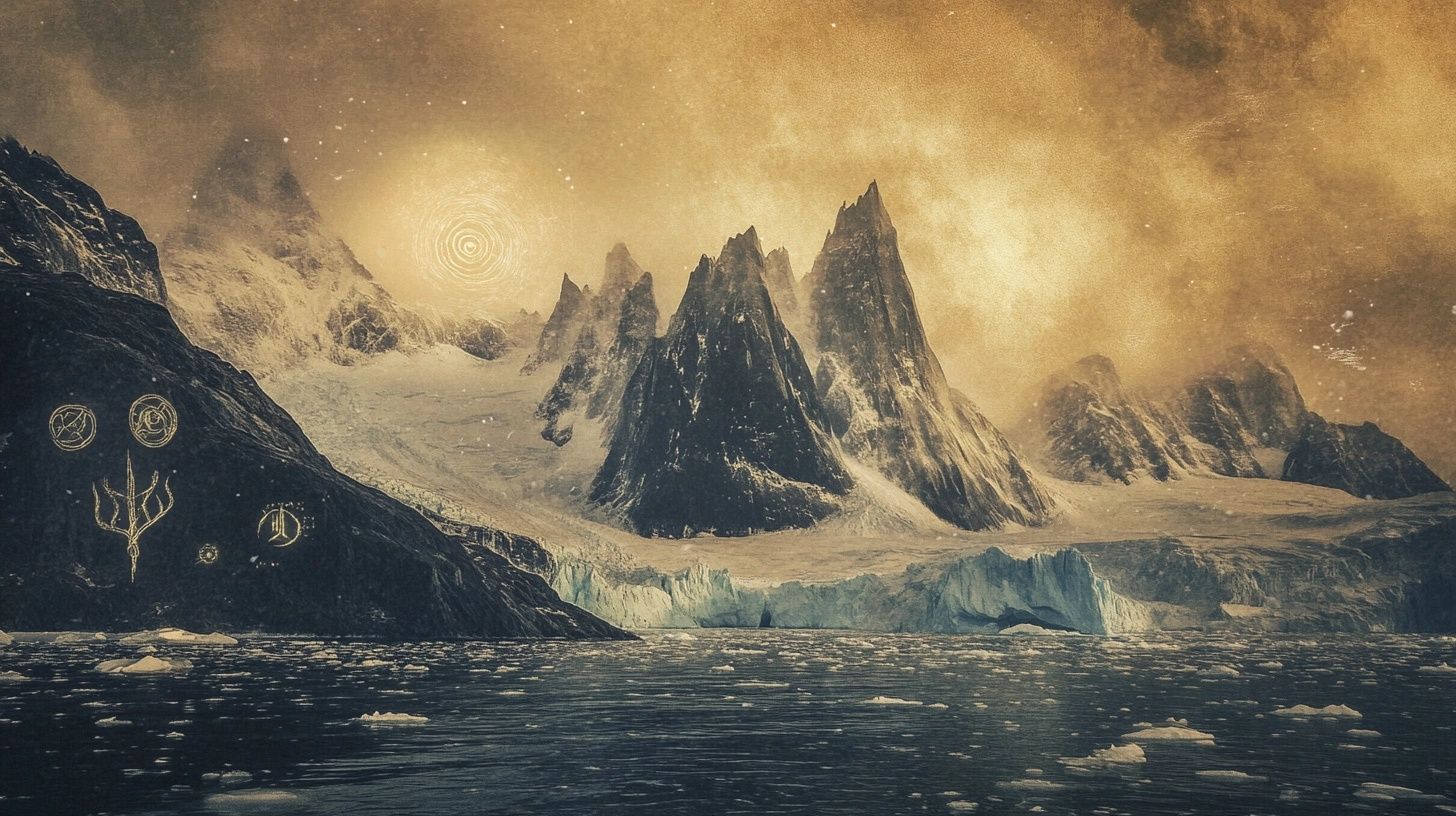Folktales and whimsical stories from Greenland
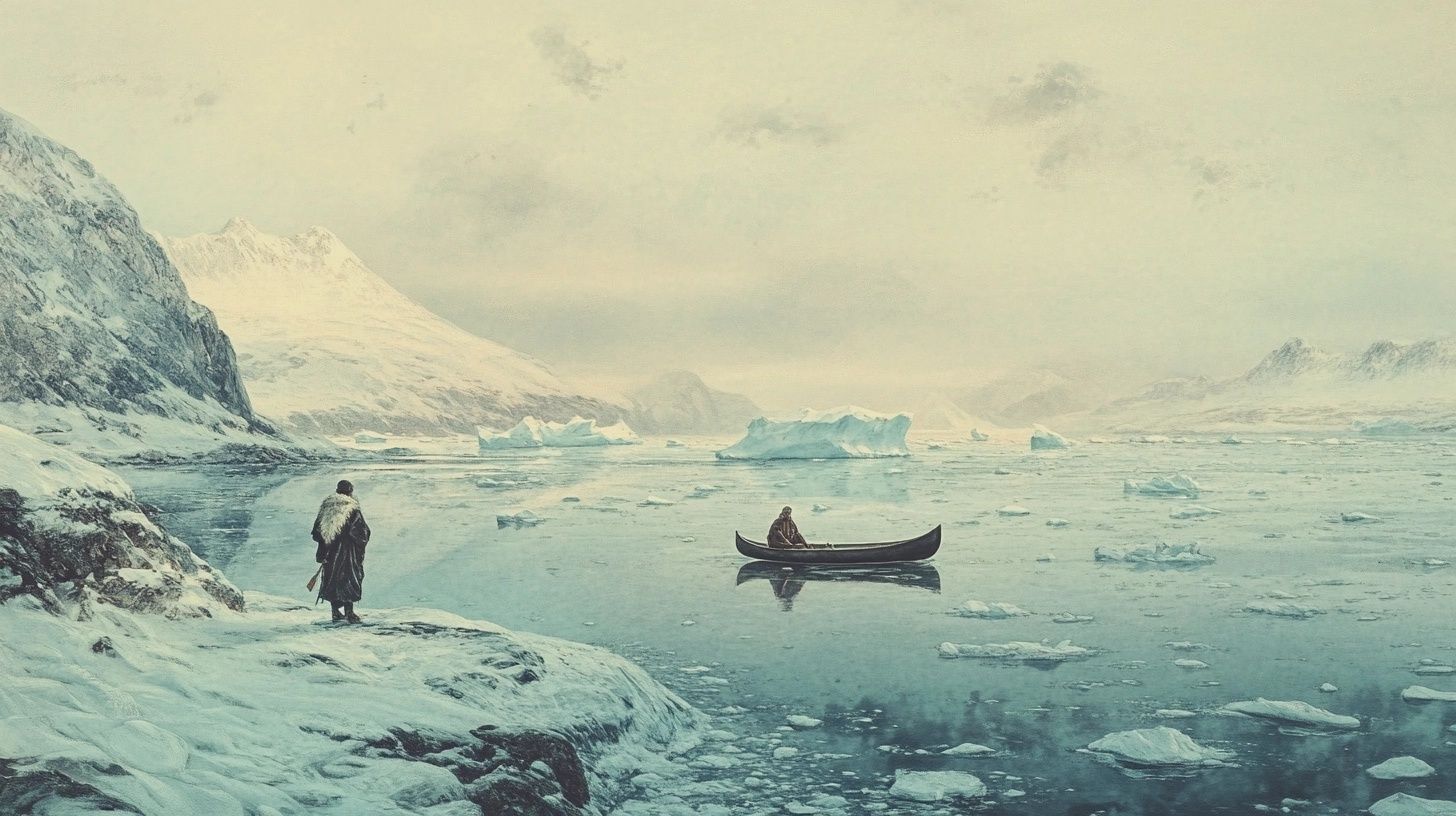
Greenlandic folklore is full of epic tales of mythical creatures, magic and beliefs reflective of life in one of the most unforgiving places on the planet.
And these morally-driven folktales are some of the best recorded. So i've pulled together a selection of some of the most and weird and wonderful for your entertainment. Enjoy!
Published: 12th Dec 2024
Author: Mythfolks
The Gifts From the Underworld
In Greenlandic folklore, the underworld is a warm and magical place that you want your soul to go to after death.
In this folktale an old bachelor grew envious of a younger man who was better at hunting and more admired by women. Seeking help, he asked his mother for advice.
She told him of a special spot where he could move a large stone to uncover a path leading to the underworld. There, he would find two boats by a lake: he must ignore the first and take something from the second.
Following her instructions, the old man found the spot, moved the stone and discovered the lake. Ignoring the first boat, he approached the second and received a piece of matak (whale-skin). After eating it, his hunting luck improved dramatically.
The younger man, noticing this sudden change, questioned him. The old man told him his secret, but lied and told him to take from the first boat instead. The younger man did as told, also finding matak, but this time it brought him terrible bad luck in hunting.
When the old bachelor returned to the stone for more, he found it impossible to move, sealing his fate.
The moral of the story:
This is a classic tale of envy and dishonesty. The old bachelor’s attempt to deceive the younger man out of jealousy ultimately prevents him from accessing further good fortune - greed and trickery will always come at a cost.
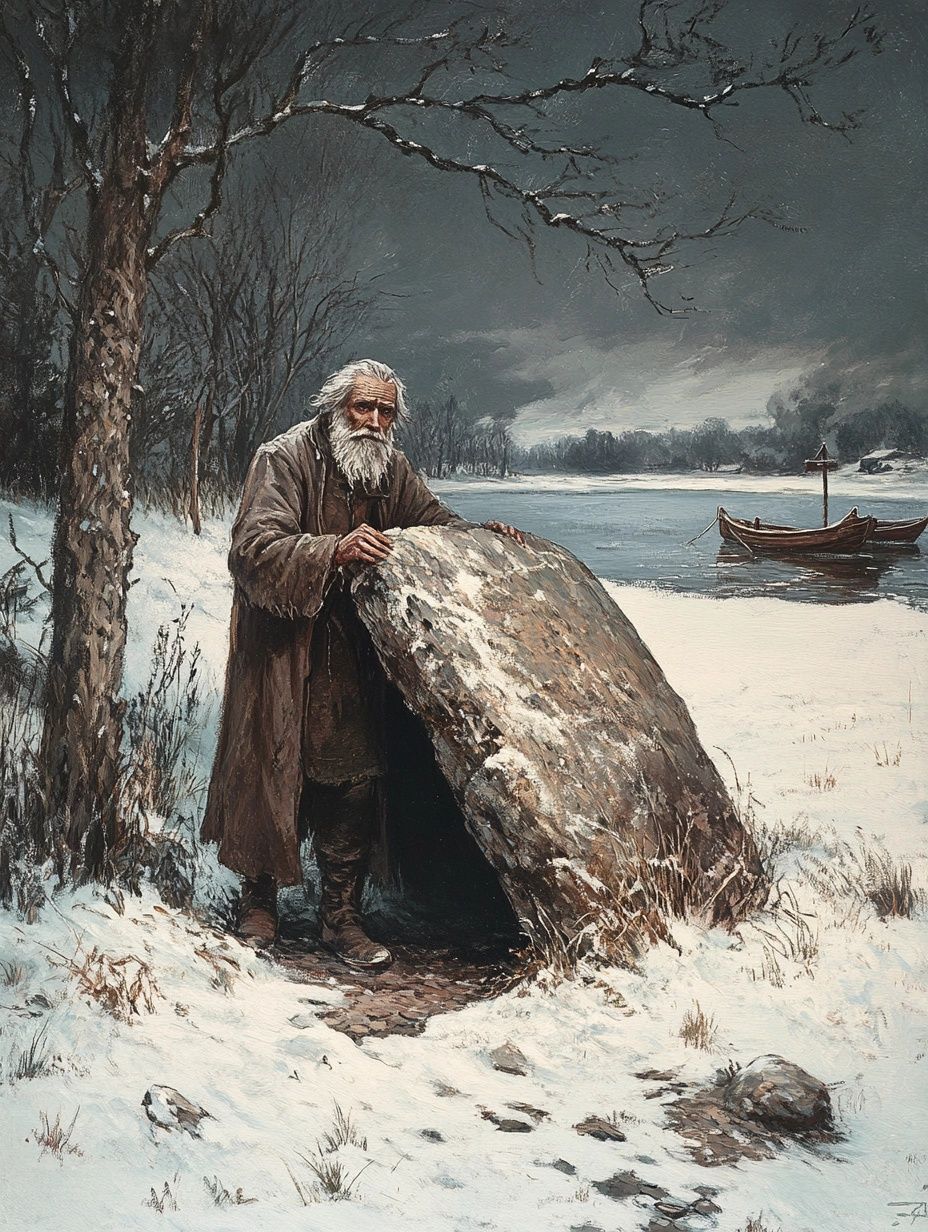
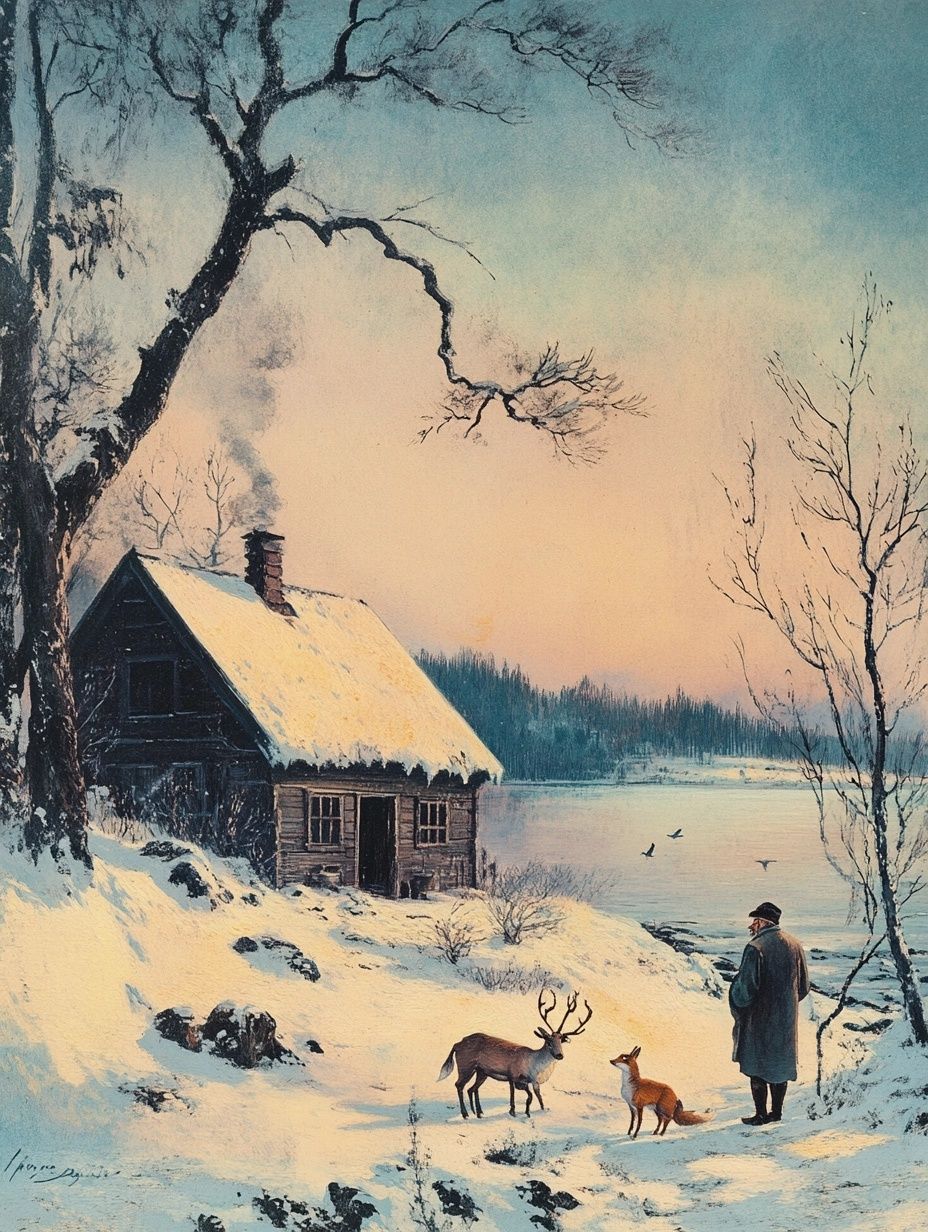
The Visiting Animals
Once, an old man was staying near a fjord to fish for salmon, but he was grieving the loss of his son, who had passed away far from home.
Unable to bear leaving his son’s grave behind, he built a winter house right on the spot so he could remain close.
In this lonely, quiet place, something strange happened. One day, three mysterious men appeared at his door.
They were unlike any visitors he had seen before - one was very tall and long-nosed, the second smaller with a flat nose and the third was tiny, with a snowy white appearance.
The old man welcomed them inside, and they spent the evening talking and sharing stories.
When it was time to leave, the short-nosed man asked for a piece of sole leather and the small white one requested a piece of walrus tusk. The old man, curious but polite, gave them what they asked.
As he stepped outside to see them off, he was stunned. The three men transformed right before his eyes!
They leapt away as a reindeer, a fox and a hare. He stood there, speechless, watching them bound into the distance.
The moral of the story:
Kindness and hospitality toward unexpected guests can bring wonder and mystery into one’s life.
The old man’s willingness to help the visitors, even without understanding who they truly are, highlights the value of generosity and respect for the unknown.
Kagsagsuk
Kagsagsuk was a poor orphan boy living with an unkind foster-mother and a group of men who treated him cruelly. He and his foster-mother lived in a cramped, cold space attached to the main house, and Kagsagsuk spent his nights trying to keep warm by lying next to the dogs.
The men mocked him and even his foster-mother mistreated him by pulling out his teeth and insulting him for eating too much. They wouldn’t let him play with other children, treating him with great cruelty.
One day, Kagsagsuk ventured into the mountains, calling out to a powerful spirit, the Amarok (a legendary wolf-like creature), asking for strength.
The Amarok appeared and threw him down repeatedly, but each time, small bones fell out from his body, symbolizing the removal of weakness. Every day, Kagsagsuk returned to the Amarok, gaining strength and resilience until he became so strong that even heavy rocks would bounce away when he kicked them.
Kagsagsuk eventually returned home, where he showed off his strength by lifting a huge piece of driftwood, impressing the villagers.
Later, when three bears were seen approaching the settlement, he bravely went out and defeated them, shocking everyone who had once mistreated him.
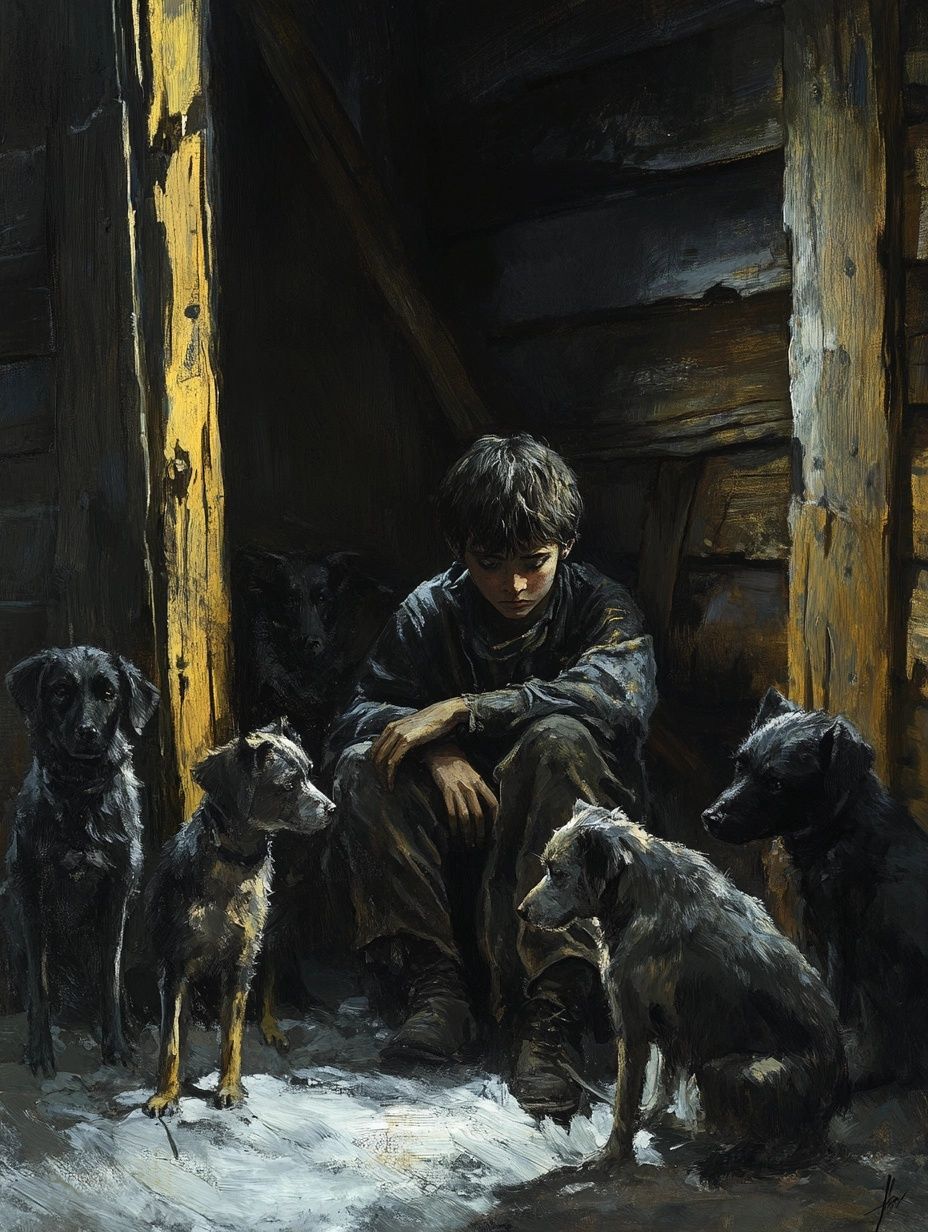
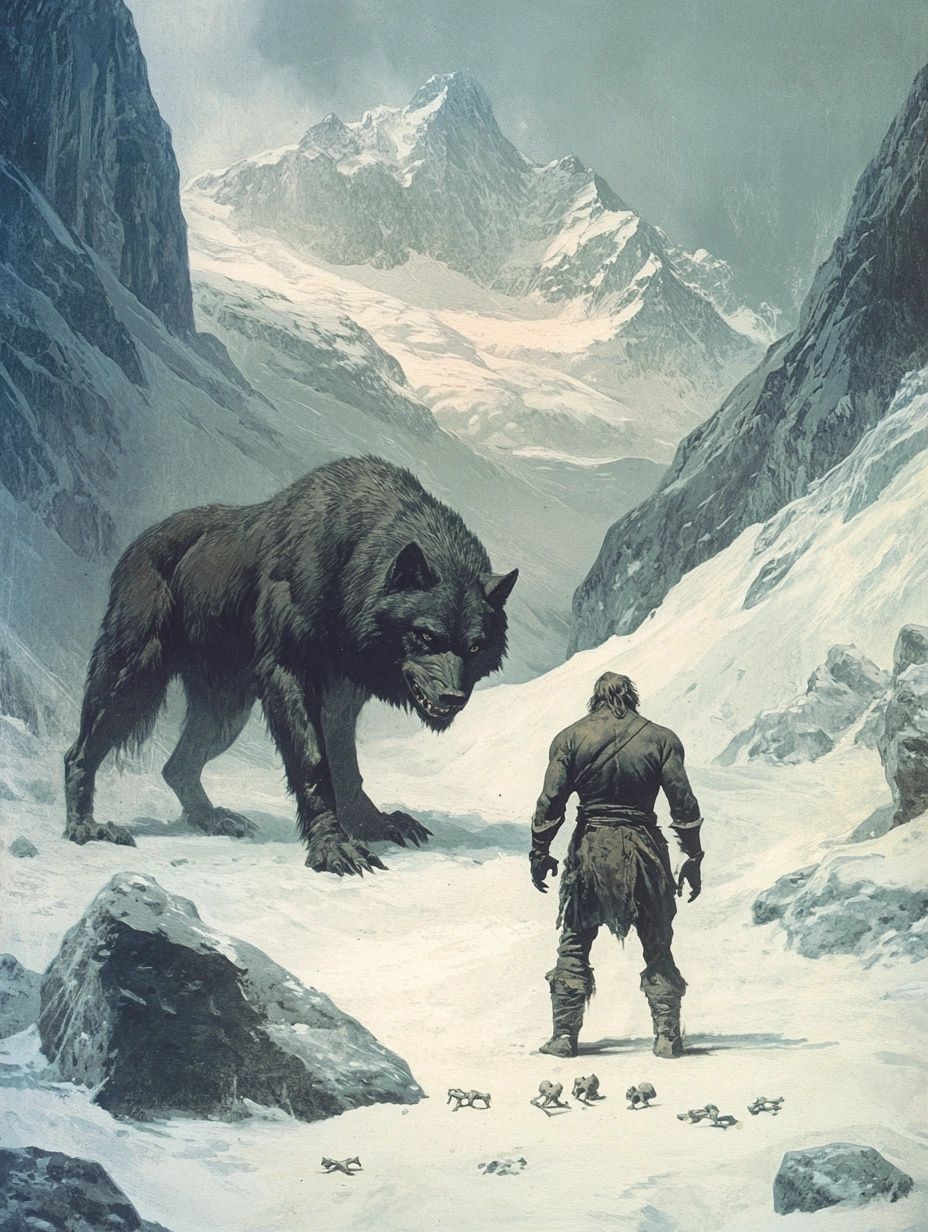
Despite his new strength, he was humble and still sought acceptance, sitting at the edge of the room until he was finally acknowledged by the men.
After enduring more mockery and cruelty, he reached his breaking point. In an act of vengeance, Kagsagsuk used his newfound strength to kill those who had tormented him, sparing only those who had shown him kindness.
He became a legend, traveling up and down the coast in his kayak, proving his strength and leaving his mark on many places.
The moral of the story:
The story of Kagsagsuk is meant to demonstrate that resilience and strength come from overcoming adversity - but it also serves as a cautionary tale about the consequences of cruelty.
Kagsagsuk's journey highlights the importance of treating others with kindness and respect, as mistreatment and injustice can lead to dire outcomes.
While he gains strength through perseverance, the story ultimately warns against the harm caused by cruelty and the need for compassion in human relationships.
The Friends
Two men, close friends from childhood, live far apart, one on an island and the other near a fjord.
They often visit each other and exchange gifts of food - one bringing reindeer meat, the other seal meat. Their bond is deep and they treasure each other’s company.
One autumn, the hunter from the fjord returns later than usual. The friend on the island, initially missing him, grows resentful.
In a petty attempt at revenge, he uses a piece of seal fat rubbed with a bit of a dead person’s body to curse the food he offers. When the hunter from the fjord arrives, the islander serves him the tainted meat.
The hunter, warned by his protective spirit (or "tornak"), realizes something is amiss but partakes in the food anyway, falling ill and sensing the betrayal.
Despite this, they continue their ritual of exchange and visits until one day, the islander begins to act erratically, seemingly driven mad by his guilt or supernatural forces tied to the curse.
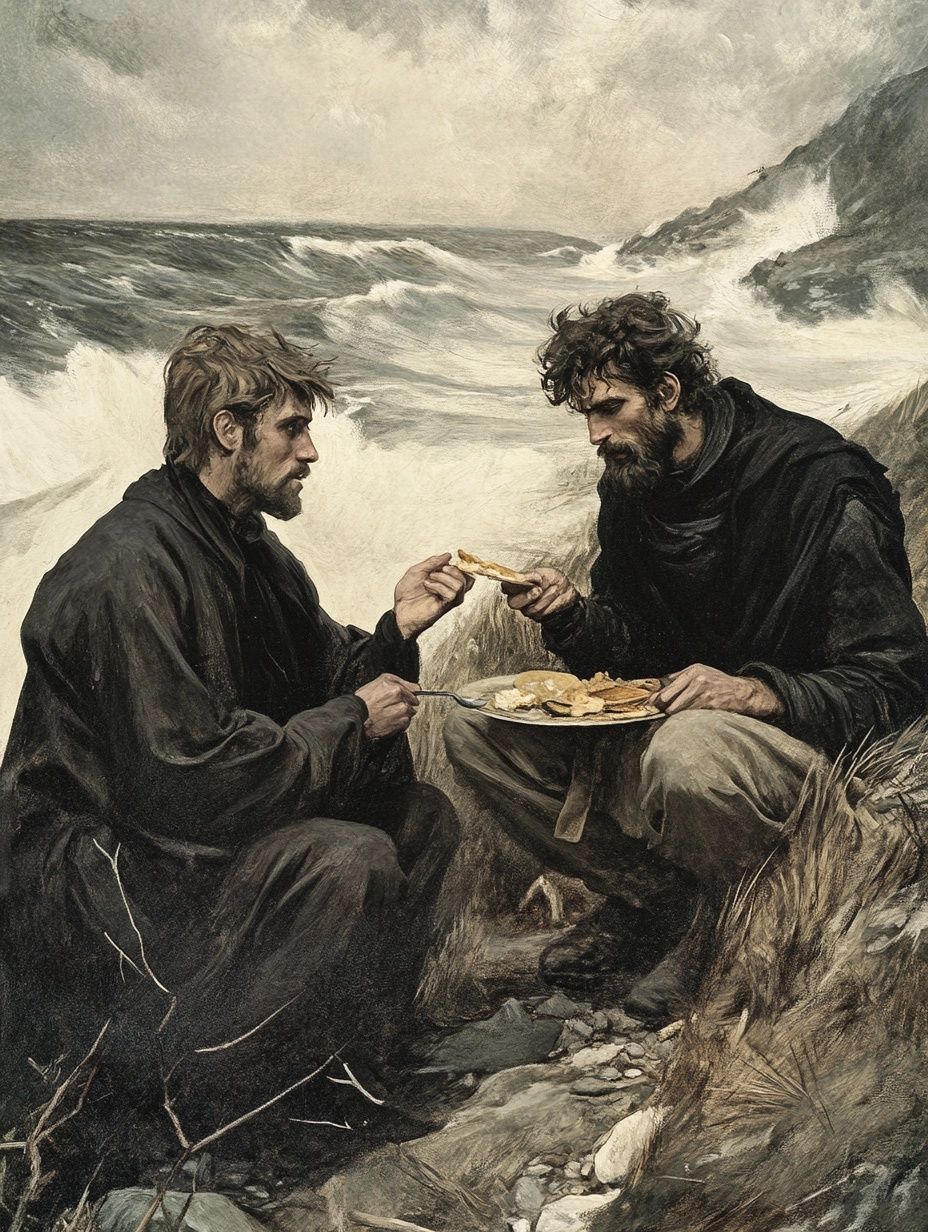
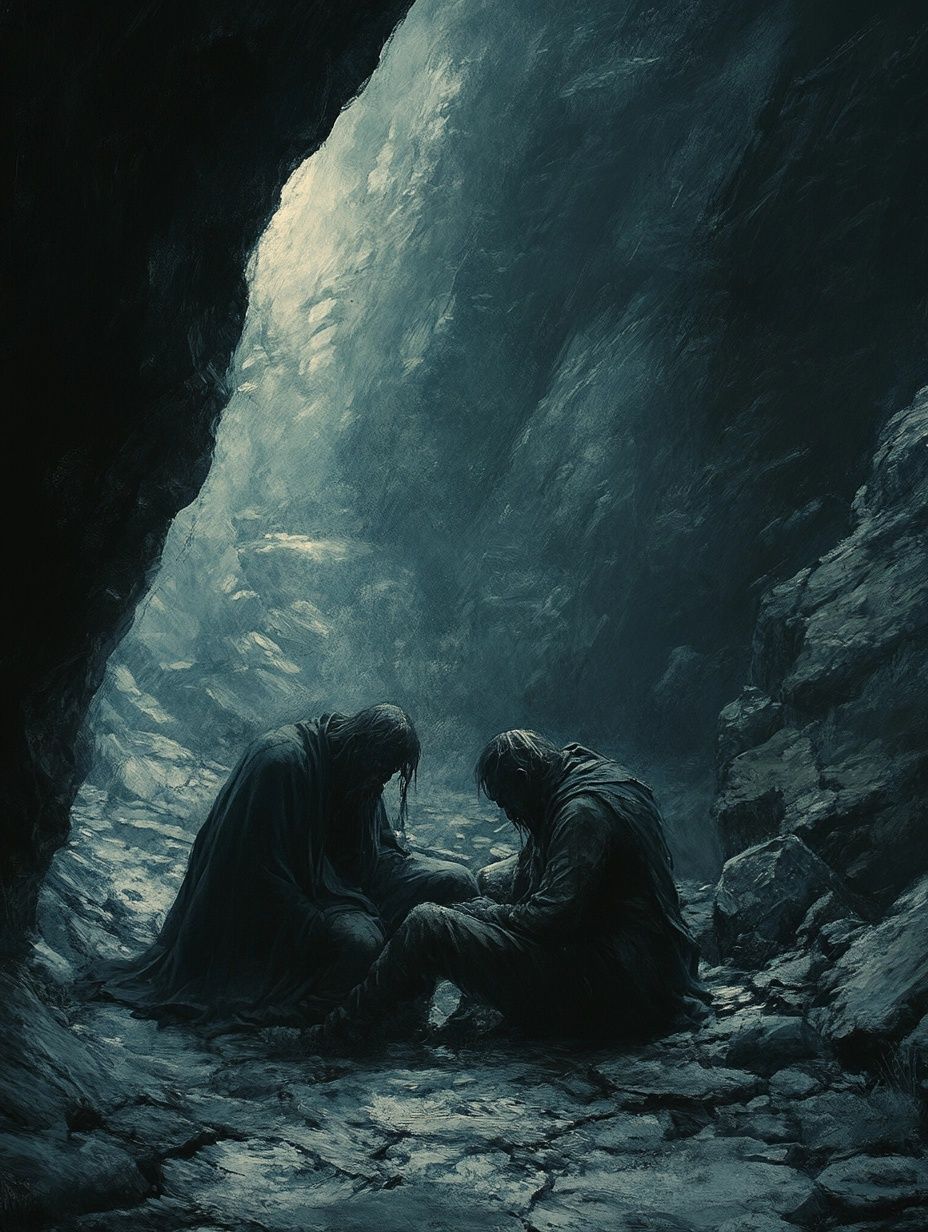
He chases the fjord hunter, expressing a desire to consume him.
Though the fjord hunter tries to evade him, the islander is relentless and the story unfolds in a series of chases, each time narrowly escaping harm.
In a tragic end, the hunter from the fjord finds his friend in a cave, shrunken and near death.
As he approaches, the islander dies in his arms, leaving the fjord hunter devastated by the loss of his beloved, albeit deeply, deeply flawed, friend.
The moral of the story:
The moral of this miserable story is that jealousy, resentment and betrayal can destroy even the closest bonds.
The tale serves as a warning about the consequences of letting petty emotions fester, showing how guilt and wrongdoing can consume a person.
It also highlights the fragility of trust and the enduring pain caused by actions driven by spite.
Don't be like that guy.
Tiggak
In this folktale, Tiggak is a renowned angakkoq (shaman) who, after marriage, begins neglecting his responsibilities and hunting duties, much to the frustration of his brothers-in-law. When winter arrives, he continues to avoid work and becomes even more withdrawn.
Eventually, as provisions run low, the brothers attempt to sustain themselves but face difficulty as winter intensifies.
One day, during a hunting outing on the ice, Tiggak notices signs of landward-drifting ice. Realizing the danger, he guides his companions back to safety.
However, their journey is fraught with challenges, from navigating dangerous ice flows to encounters with hostile figures. Through these trials, Tiggak's magical knowledge and foresight play a crucial role in securing their survival.
The story also involves supernatural elements, with Tiggak invoking charms and utilizing his mystical understanding to overcome obstacles.
His leadership and magic ultimately save the group, reinforcing his reputation as an angakok, despite his previous reluctance to fulfil his responsibilities.
The moral of the story:
This one is all about seeing one's character being revealed in times of crisis. Despite neglecting his duties, Tiggak rises to the occasion when it matters most, showing that wisdom and capability can redeem past shortcomings and ensure survival.
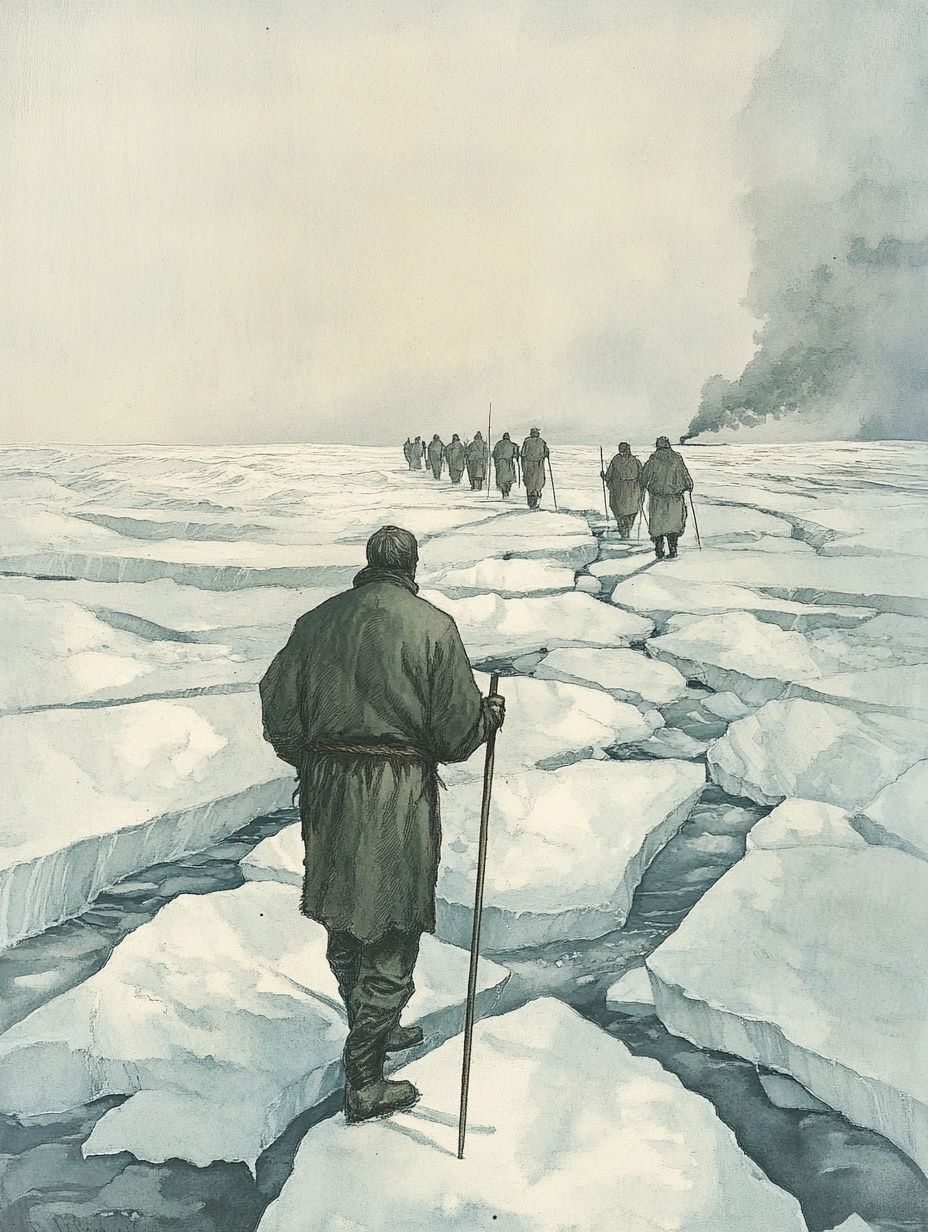

The Sunrise
A man from the east coast of Greenland loved his home so much that he never left, even during the summer months when others traveled. His greatest joy was watching the sun rise over the ocean.
As the man grew older, his son became eager to see other lands, particularly the west coast, where their countrymen had settled.
Eventually, the son persuaded his father to travel with him.
However, when they passed Cape Farewell, the man saw the sun rising behind the land instead of out of the ocean. Unable to bear the sight, he insisted on returning home immediately.
Once they reached their home island, the man woke early the next morning, desperate to see the sunrise he loved so dearly. But when his people went to find him, they discovered he had died, overcome by the joy and power of witnessing the familiar sunrise once more.
The moral of the story:
I have to say, i didn't see that one coming! Though perhaps i should as many Greenland folktales have a dark twist. This story reflects the overwhelming power of home and familiarity and demonstrates how deep attachments can shape our lives and even consume us.
It also serves as a reminder that clinging too tightly to what we love, no matter how beautiful, can sometimes be our undoing.
The Shark as Provider
A mother and her daughter, abandoned by their relatives and left helpless, were saved from starvation when a dead seal drifted ashore.
Some time later, after finding another dead seal, a shark appeared, rising out of the sea and spoke to them. The shark promised to provide for all their needs and moved in to live with them.
When dangerous beings (the Inuarutligaks) approached, the shark carried the mother and daughter, along with all their belongings, on his back to safety on an island.
The moral of the story:
It seems obvious where many of today's most popular cartoons may get their inspirations!
As evidenced in this article, there are a lot of animal focused stories in Greenlandic folklore - though not all of them have a happy ending like this one.
This story highlights themes of unexpected kindness and protection, showing that help can come from unlikely places.
It promotes trust in the natural world and reminds us that even perceived dangers (shark anyone?) can become providers and protectors.
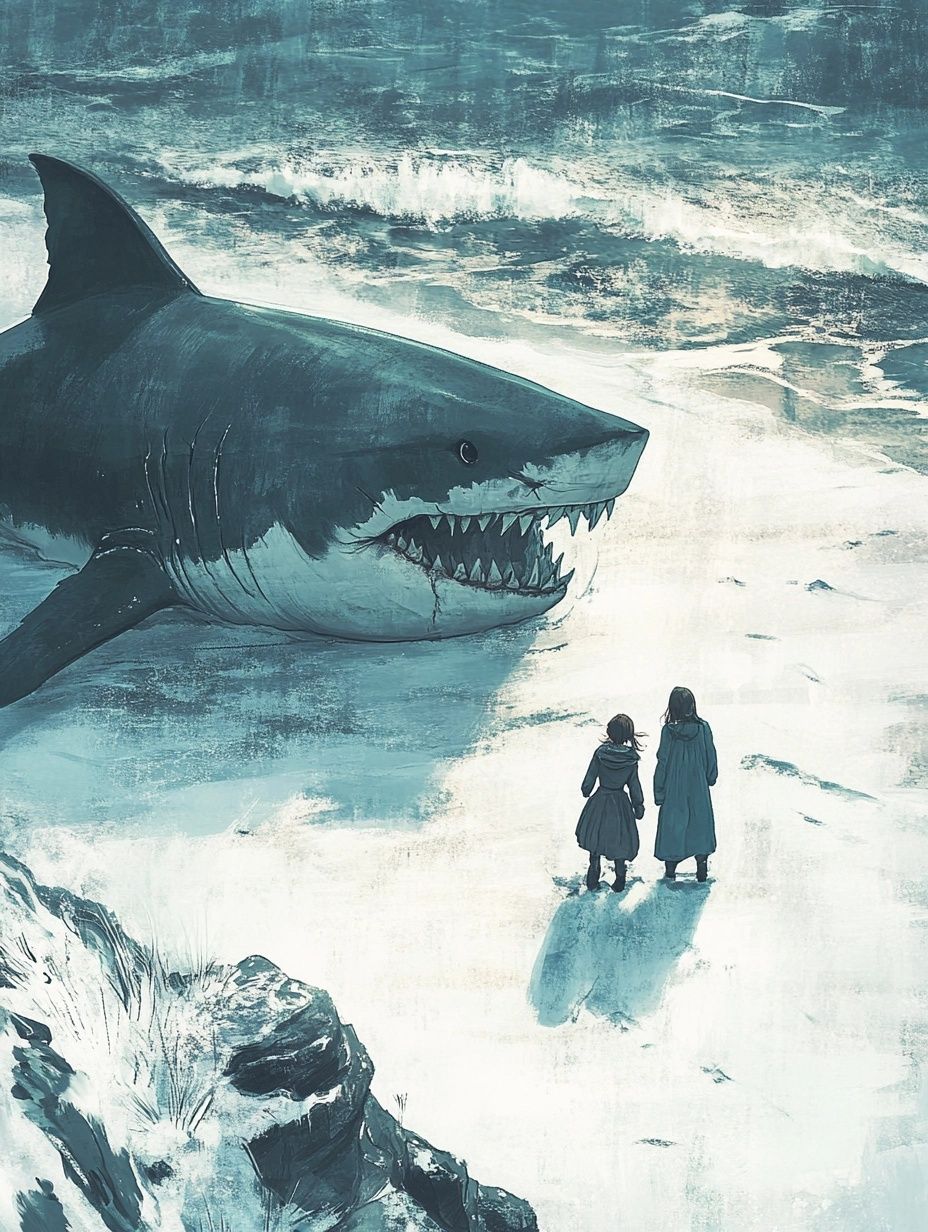
I hope you enjoyed my roundup of some old Greenlandic folktales - there are many, many others which i may come back to in additional articles!
And if you want more on this fascinating Arctic country, take a look here for my comprehensive overview of all the mythology and mythical creatures from the Inuit of Greenland.
Article sources
- Rink, Henry. Tales and Traditions of the Eskimo: With a Sketch of Their Habits, Religion, Language and Other Peculiarities. Translated by the author. Edited by Robert Brown. London: William Blackwood and Sons, 1875
You might also like
11 US ghost towns that are actually haunted
Maybe...if you like escaping the crowds, these towns are not only abandoned but largely unvisited by tourists. Check them out.


